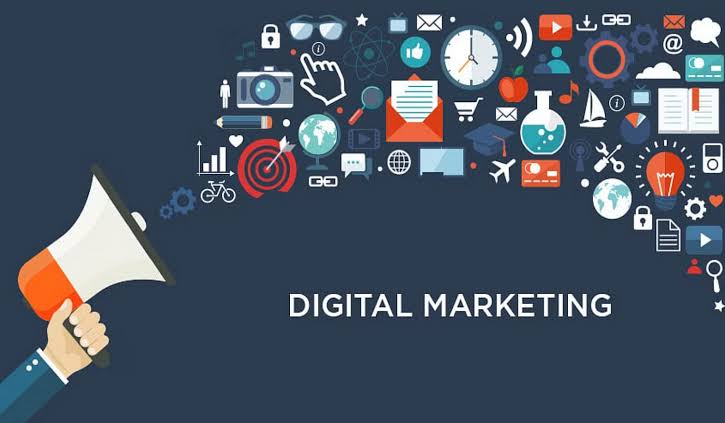Target audience in Digital Marketing
In the fast-paced world of digital marketing understanding your target audience is cornerstone of success. Without a clear grasp of who your audience is. Your marketing efforts can become a shot in the dark. Wasting time, resources and potential opportunities. This article delves into the importance of understanding your target audience. It provides practical strategies to effectively identify engage and retain them.
Defining the Target Audience
The target audience refers to specific group of consumers most likely to be interested in your product or service. These individuals share common characteristics. Demographics interests, needs. And behaviors. Identifying your target audience is crucial. It allows you to tailor your marketing messages and strategies to resonate with the people who are most likely to convert into customers.
Importance of Understanding Your Target Audience
Understanding your target audience is vital for several reasons. Firstly it enhances the efficiency of your marketing campaigns. By knowing who you are targeting, you can create personalized content that captures their attention. And addresses their specific needs. This leads to higher engagement rates and ultimately, better conversion rates.
Secondly understanding your target audience helps in optimizing your marketing budget. Instead of casting wide net and hoping for the best, you can allocate your resources more effectively by focusing on the channels and tactics that are most likely to reach and influence your audience. This targeted approach minimizes waste and maximizes return on investment (ROI).
Lastly a deep understanding of your audience fosters brand loyalty and trust. When consumers feel that a brand truly understands and caters to their needs, they are more likely to develop strong emotional connection with the brand. This connection leads to repeat business. It also results in positive word-of-mouth. It helps cultivate long-term customer relationships.
Steps to Identify Your Target Audience
Conduct Market Research
Market research is the foundation of identifying your target audience. Start by analyzing existing customer data to identify common traits and behaviors. Use surveys, interviews, and focus groups to gather insights directly from your audience. Additionally, leverage online tools and analytics to track user behavior on your website and social media platforms.
Create Buyer Personas
Buyer personas are fictional representations of your ideal customers. They are based on real data and insights gathered from your market research. Each persona includes detailed information about the customer’s demographics, interests, pain points, motivations, and buying behaviors. Creating buyer personas helps you humanize your audience and tailor your marketing strategies accordingly.
Analyze Competitors
Studying your competitors can provide valuable insights into your target audience. Analyze their customer base, marketing strategies, and content to identify what works and what doesn’t. This competitive analysis can help you refine your own approach and identify gaps or opportunities in the market.
Segment Your Audience
Audience segmentation involves dividing your broader target audience into smaller, more specific groups based on shared characteristics. Common segmentation criteria include demographics (age, gender, income), psychographics (lifestyle, values, interests), geographic location, and behavioral factors (purchase history, brand loyalty). Segmentation allows you to create highly targeted campaigns that resonate with each group.
Engaging Your Target Audience
Personalize Your Content
Personalization is key to engaging your target audience. Use the insights from your buyer personas and audience segmentation to create content that speaks directly to each segment. Personalization can include addressing the audience by name, recommending products based on their previous purchases, or tailoring email campaigns to their interests and behaviors.
Utilize Social Media
Social media platforms offer a wealth of opportunities to engage with your target audience. Identify the platforms where your audience is most active and create a presence there. Use social media to share relevant content, interact with followers, and gather feedback. Paid social media advertising allows for highly targeted campaigns based on user demographics, interests, and behaviors.
Leverage Email Marketing
Email marketing remains a powerful tool for engaging with your target audience. Segment your email list based on the criteria identified earlier and send personalized, relevant content to each segment. Use automation to send timely messages triggered by specific actions or behaviors, such as abandoned cart emails or post-purchase follow-ups.
Monitor and Analyze Engagement
Regularly monitor and analyze the engagement metrics of your marketing campaigns. Track key performance indicators (KPIs) such as open rates, click-through rates, conversion rates, and social media interactions. Use these insights to refine your strategies and improve future campaigns.
Retaining Your Target Audience
Provide Exceptional Customer Service
Exceptional customer service is crucial for retaining your target audience. Ensure that your customer support team is responsive, knowledgeable, and empathetic. Address customer inquiries and concerns promptly and effectively to build trust and loyalty.
Offer Value Beyond the Purchase
Retaining customers involves offering value beyond the initial purchase. Provide educational content, exclusive offers, and loyalty programs to keep your audience engaged and coming back for more. Continuously seek feedback to understand their evolving needs and preferences.
Stay Consistent and Authentic
Consistency and authenticity are essential for building long-term relationships with your target audience. Maintain a consistent brand voice and message across all channels. Be transparent and genuine in your interactions, and show that you genuinely care about your customers’ needs and satisfaction.
